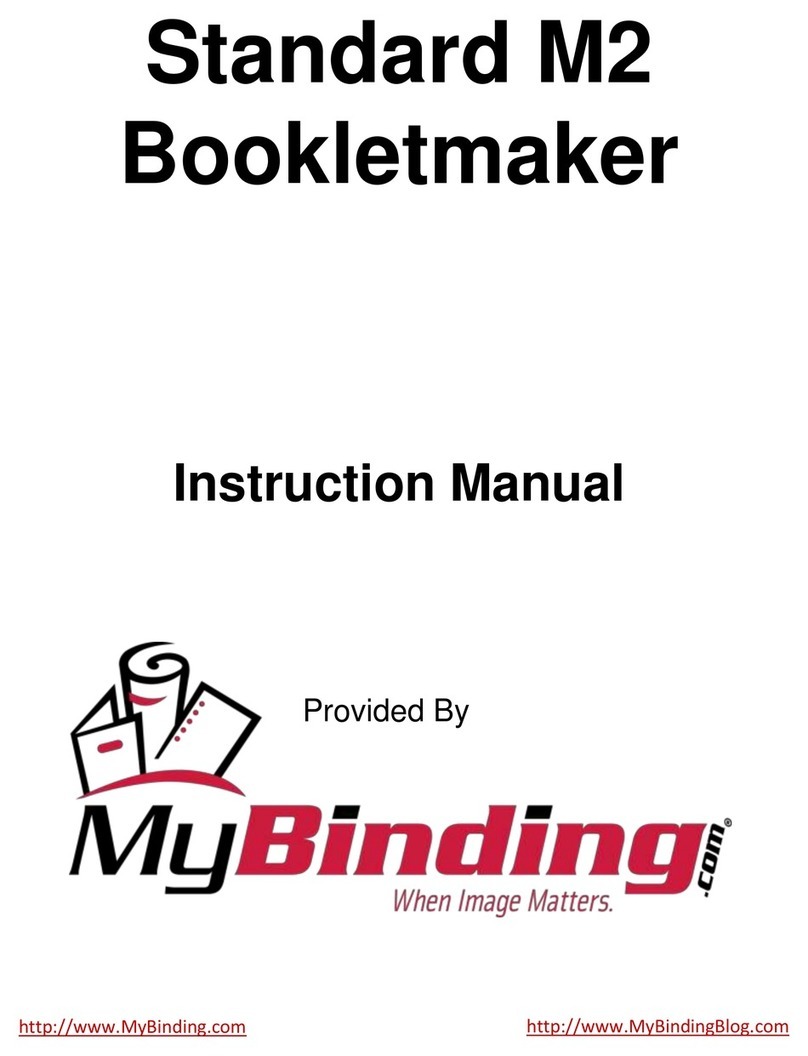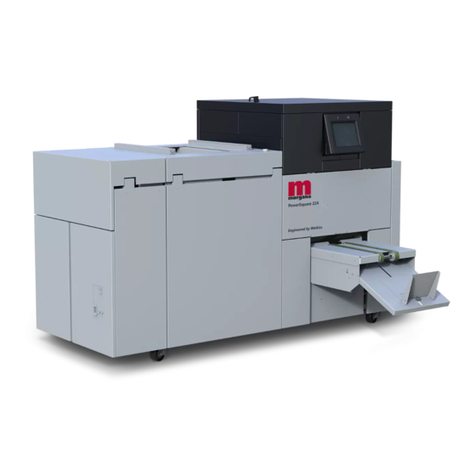Konica Minolta FS-601 User manual

SERVICE MANUAL
2004.09
Ver. 2.0
FS-601
THEORY OF OPERATION


After publication of this service manual, the parts and mechanism may be subject to change for
improvement of their performance.
Therefore, the descriptions given in this service manual may not coincide with the actual machine.
When any change has been made to the descriptions in the service manual, a revised version will be
issued with a revision mark added as required.
Revision mark:
• To indicate clearly a section revised, show to the left of the revised section.
A number within represents the number of times the revision has been made.
• To indicate clearly a section revised, show in the lower outside section of the correspond-
ing page.
A number within represents the number of times the revision has been made.
NOTE
Revision marks shown in a page are restricted only to the latest ones with the old ones deleted.
• When a page revised in Ver. 2.0 has been changed in Ver. 3.0:
The revision marks for Ver. 3.0 only are shown with those for Ver. 2.0 deleted.
• When a page revised in Ver. 2.0 has not been changed in Ver. 3.0:
The revision marks for Ver. 2.0 are left as they are.
1
1
1
1
2004/09 2.0 Adding the descriptions and correcting errors in
writing
2004/03 1.0 — Issue of the first edition
Date Service manual Ver. Revision mark Descriptions of revision
1


FS-601 Theory of Operation Ver2.0 Sep. 2004
i
I Outline
II Composition/Operation
CONTENTS
IOutline
1. Product specification ............................................................................................1-1
1.1 Type ................................................................................................................... 1-1
1.2 Functions ........................................................................................................... 1-1
1.3 Paper type ......................................................................................................... 1-1
1.3.1 Non-Sort ....................................................................................................... 1-1
1.3.2 Sort............................................................................................................... 1-1
1.3.3 Sort staple ....................................................................................................1-2
1.3.4 Saddle staple................................................................................................1-2
1.4 Stapling.............................................................................................................. 1-2
1.5 No. of sheets to be stapled (sort staple)............................................................1-3
1.6 Machine specifications....................................................................................... 1-3
1.7 Operating environment ...................................................................................... 1-3
II Composition/Operation
1. Overall composition..............................................................................................2-1
2. Drive system ........................................................................................................ 2-2
3. Paper path............................................................................................................ 2-3
4. Mechanical operations ......................................................................................... 2-4
4.1 Horizontal transport mechanism........................................................................ 2-4
4.1.1 Paper path switching mechanism ................................................................. 2-4
4.1.2 Finisher paper transport mechanism ............................................................ 2-5
4.2 Finishing tray mechanism .................................................................................. 2-6
4.2.1 Non-sort mode..............................................................................................2-6
4.2.2 Sort mode ..................................................................................................... 2-7
4.2.3 Staple Mode ................................................................................................. 2-7
4.2.4 Center staple booklet mode.......................................................................... 2-8
4.2.5 Paper stacking with finishing tray.................................................................. 2-9
4.2.6 Aligning mechanism ................................................................................... 2-10
4.2.7 Offsetting operation .................................................................................... 2-11
4.2.8 Exiting operation ......................................................................................... 2-12
4.3 Stapling unit ..................................................................................................... 2-13
4.3.1 Types and positions of staples.................................................................... 2-13
4.3.2 Stapling unit moving mechanism ................................................................ 2-14
4.3.3 Staple operation ......................................................................................... 2-15
4.3.4 Stapling unit................................................................................................2-16

FS-601 Theory of Operation Ver2.0 Sep. 2004
ii
I Outline
II Composition/Operation
4.3.5 Stapling unit moving control ....................................................................... 2-17
4.3.6 Elevator tray mechanism ............................................................................ 2-18
4.4 Booklet tray...................................................................................................... 2-19
4.4.1 Overall composition.................................................................................... 2-19
4.4.2 Transport operation in saddle section......................................................... 2-20
4.4.3 Folding mechanism .................................................................................... 2-24
4.4.4 Paper folding start position......................................................................... 2-25

FS-601 Theory of Operation Ver2.0 Sep. 2004 Product specification
1-1
I Outline
I Outline
1. Product specification
1.1 Type
1.2 Functions
1.3 Paper type
1.3.1 Non-Sort
1.3.2 Sort
Type Multi Staple Finisher with Saddle (Booklet)
Installation Freestanding
Document Alignment Center
Supplies Staple Cartridge
No. of Holes (optional) Metric: 4holes, Inch: 2holes / 3holes
Modes Normal
Non-Sort
Sort
Sort Staple
Saddle Staple
Paper Type Paper Size Weight Tray Capacity Exit Tray No. of Sheets
to be Stapled
Plain Paper
A6R to A3 Wide
5-1/2 × 8-1/2R/
5-1/2 × 8-1/2
to
12-1/4 × 18 60 to 256
g/m2
16 to 68 lb
60 to 90 g/m2
16 to 24 lb
Elevator Tray -
No. of
Sheets
Height
A4R / 8-
1/2×11R
or smaller
1000
150 mm
B4/
8-1/2×14
or larger
500
75 mm
Envelop
OHP Film
Label Paper
Thick Paper
Max. Min. Controlled by whichever
reached earlier
CD311.15
mm 86 mm
20 sheets
FD457.2
mm
139.7
mm
Paper Type Paper Size Weight Tray Capacity Exit Tray No. of Sheets
to be Stapled
Plain Paper
B5R/B5 to A3
8-1/2 × 11R/
8-1/2 × 11
to
11 × 17
60 to 90
g/m2
16 to 24 lb
No. of
Sheets
Height
A4R / 8-
1/2×11R
or smaller
1000
150 mm
B4/
8-1/2×14
or larger
500
75 mm
Elevator Tray -
Controlled by whichever
reached earlier

Product specification FS-601 Theory of Operation Ver2.0 Sep. 2004
1-2
I Outline
1.3.3 Sort staple
* The number of Sheets to be Stapled is limited for high-density images. (Color Wise: 3 to
20 sheets)
1.3.4 Saddle staple
1.4 Stapling
Paper Type Paper Size Weight Tray Capacity Exit Tray No. of Sheets
to be Stapled
Plain Paper
Cardboard
B5R/B5 to A3
8-1/2 × 11R/
8-1/2 × 11
to
11×17
Normal
Mode
60 to 90
g/m2
16 to 24 lb
Cover Mode
60 to 209
g/m2
16 to 55-1/2
lb
No. of
Sheets
Height
No. of
Sets
A4R / 8-
1/2×11R
or smaller
1000
150 mm
30
B4/
8-1/2×14
or larger
500
75 mm
30
Normal Mode *1
Elevator Tray
A4R/8-
1/2×
11R or
smaller
2 to 50
B4/8-
1/2×14
or larger
2 to 25
Controlled by whichever
reached earlier
Paper Type Paper Size Weight Tray Capacity Exit Tray No. of Sheets
to be Stapled
Plain Paper
A4R, B4, A3
8-1/2 × 11R/
8-1/2 × 11,
8-1/2 × 14
11 × 17
60 to 90
g/m2
16 to 24 lb
10 sets
(No. of Sheets to be
Stapled: 6 to 10 sheets)
20 sets
(No. of Sheets to be
Stapled: 2 to 5 sheets)
Booklet Tray
2 to 10 sheets
(Max. 40
pages)
Staple Filling Mode Dedicated Staple Cartridge Mode (5000 staples)
Staple Detection Available (Nearly Empty: 40 remaining staples)
Stapling Position
Rear: Parallel 1 point
Front: Parallel 1 point
Center: Parallel 2 points
Stapled Paper Size B5R/B5 to A3, 8-1/2 × 11R / 8-1/2 × 11 to 11 × 17
Manual Staple None
Folding Mode Roller Pressure Folding
Folding Position Center of Paper

FS-601 Theory of Operation Ver2.0 Sep. 2004 Product specification
1-3
I Outline
1.5 No. of sheets to be stapled (sort staple)
A. A4R, 8-1/2 × 11R or smaller
B. B4, 8-1/2 × 14 or larger
1.6 Machine specifications
1.7 Operating environment
Conforms to the operating environment of the main unit.
No. of Sheets to
be Stapled
No. of Sets
Rear: Parallel Center: Parallel Front: Parallel
2 100 40 40
3 to 5 80 40 40
6 to 10 60 40 40
11 to 20 30 30 30
21 to 30 30 30 30
31 to 50 30 sets or 1000 sheets
No. of Sheets to
be Stapled
No. of Sets
Rear: Parallel Center: Parallel Front: Parallel
2 100 50 50
3 to 5 80 40 40
6 to 10 40 40 40
11 to 20 30 sets or 1000 sheets
21 to 25
Power Requirements DC 24 V (supplied from the main unit)
DC 5 V (generated by Finisher)
Max. Power
Consumption 65 W or less
Dimensions 601 mm (W) × 933 mm (H) × 603 mm (D)
23-3/4 inch (W) × 36-3/4 inch (H) × 23-3/4 inch (D)
Weight 41.6 kg (91-3/4 lb)

Product specification FS-601 Theory of Operation Ver2.0 Sep. 2004
1-4
I Outline
Blank page

FS-601 Theory of Operation Ver2.0 Sep. 2004 Overall composition
2-1
II Composition/Operation
II Composition/Operation
1. Overall composition
[1] Elevator Tray [5] Paper Guide
[2] Upper Door [6] Rear Door
[3] Front Door [7] Hookup Cord
[4] Booklet Tray
[1] [2] [3]
[7]
[4]
[5]
[6]

Drive system FS-601 Theory of Operation Ver2.0 Sep. 2004
2-2
II Composition/Operation
2. Drive system
Saddle Drive
Mechanism
Aligning Drive
Mechanism
Entrance Drive
Mechanism
Tray Drive
Mechanism
Stapling Drive
Mechanism

FS-601 Theory of Operation Ver2.0 Sep. 2004 Paper path
2-3
II Composition/Operation
3. Paper path

Mechanical operations FS-601 Theory of Operation Ver2.0 Sep. 2004
2-4
II Composition/Operation
4. Mechanical operations
4.1 Horizontal transport mechanism
4.1.1 Paper path switching mechanism
• The path along which the paper is transported is selected with the Entrance Switching
Solenoid.
• During a 2-sided print mode, the solenoid is energized to feed the paper into the lower
path and then feed it back to the main unit.
• In a 1-sided print mode, and when a 2-sided printed page is fed in the 2-sided print
mode, the Entrance Switching Solenoid is deenergized so that the paper can be trans-
ported to the Finisher.
Entrance Switching Solenoid (SL1-HO)
Solenoid:
Energized
Solenoid:
Deenergized

FS-601 Theory of Operation Ver2.0 Sep. 2004 Mechanical operations
2-5
II Composition/Operation
4.1.2 Finisher paper transport mechanism
• Drive from the Transport Motor turns the Transport Roller to transport paper fed from the
main unit onto the Finisher.
• The Transport Roller on the Finisher side is driven by the Transport Motor to feed the
paper through the Finisher.
Transport Motor
(M1-FN)
Finisher side
Horizontal Unit side
Transport Roller
Transport Roller

Mechanical operations FS-601 Theory of Operation Ver2.0 Sep. 2004
2-6
II Composition/Operation
4.2 Finishing tray mechanism
4.2.1 Non-sort mode
• In the Non Sort Mode, Paper is taken back onto the Finishing Tray and then fed out onto
the Elevator Tray.
Paper Transport
Elevator Tray
Paper
Finishing Tray Elevator Tray

FS-601 Theory of Operation Ver2.0 Sep. 2004 Mechanical operations
2-7
II Composition/Operation
4.2.2 Sort mode
• In the Sort Mode, Paper is taken back onto the Finishing Tray and shifted to the front or rear side with
the Aligning Plate. Then, a stack of paper per set is fed out onto the Elevator Tray.
• However, even if printing has not been completed for all sets of prints, when 10 sheets for the large
size whose length is longer than 300mm or 30 sheets for the small size whose length is shorter than
299mm are stacked, a set of sheets is fed out onto the Elevator Tray.
Paper Transport
4.2.3 Staple Mode
• In the Staple Mode, when one complete set of prints is fed out onto the Finishing Tray,
stapling is performed. A stack of stapled paper is then fed out onto the Elevator Tray.
Paper Transport
1st set
2nd set
4th set
3rd set
Paper Stacking for 4 sets in Sort Mode
Finishing Tray Shifted with the Aligning Plate for each job Elevator Tray
Finishing Tray Elevator TrayStapling for one set of prints

Mechanical operations FS-601 Theory of Operation Ver2.0 Sep. 2004
2-8
II Composition/Operation
4.2.4 Center staple booklet mode
• In Center Staple Booklet Mode, A stack of paper fed onto the Finishing Tray is stapled (at
two places) and then transported to the Saddle Section.
• The paper transported to the saddle section is folded, and then fed out onto the Booklet
Tray.
• The maximum number of the Center Staple Booklet is ten sheets.
Paper Transport
Finishing Tray Booklet Tray2-Point center stapling Saddle Section Folding

FS-601 Theory of Operation Ver2.0 Sep. 2004 Mechanical operations
2-9
II Composition/Operation
4.2.5 Paper stacking with finishing tray
• After the paper has been fed through the Exit Roller, the paper drops onto the Finishing
Tray. Then, the Paddle taps the top of the paper twice (once for the additional sheets) so
that the trailing edge of the paper reaches the Finishing Tray Stopper.
• After Paddle operation is finished, Swing Guide will be lowered to prevent curling of
paper.
• The Paddle Motor provides the drive for the Paddle and Its home position is detected
with the Paddle Home Position Sensor.
Paper Aligning Plate Exit Roller Paddle Upper Exit Roller
Paper Exit Belt Lower Exit Roller
Finishing Tray Stopper
Swing Guide

Mechanical operations FS-601 Theory of Operation Ver2.0 Sep. 2004
2-10
II Composition/Operation
4.2.6 Aligning mechanism
• Two Aligning Plates are moved by drive of the Front, or Rear Aligning Motor in the for-
ward or reverse direction.
• The Aligning Plates home position is detected with the Front, or Rear Aligning Plate
Home Position Sensor. With reference to this home position, the amount of movement of
the Aligning Plate is determined.
Front Aligning Motor
(M4-FN)
Front Aligning Plate
Front Aligning Plate Home Position Sensor (PI4-FN)
Shield Plate
Rear Aligning Motor
(M5-FN)
Rear Aligning Plate
Home Position Sensor
(PI5-FN)
Rear Aligning Plate
Shield Plate
Paper
(Front Side)
Table of contents

